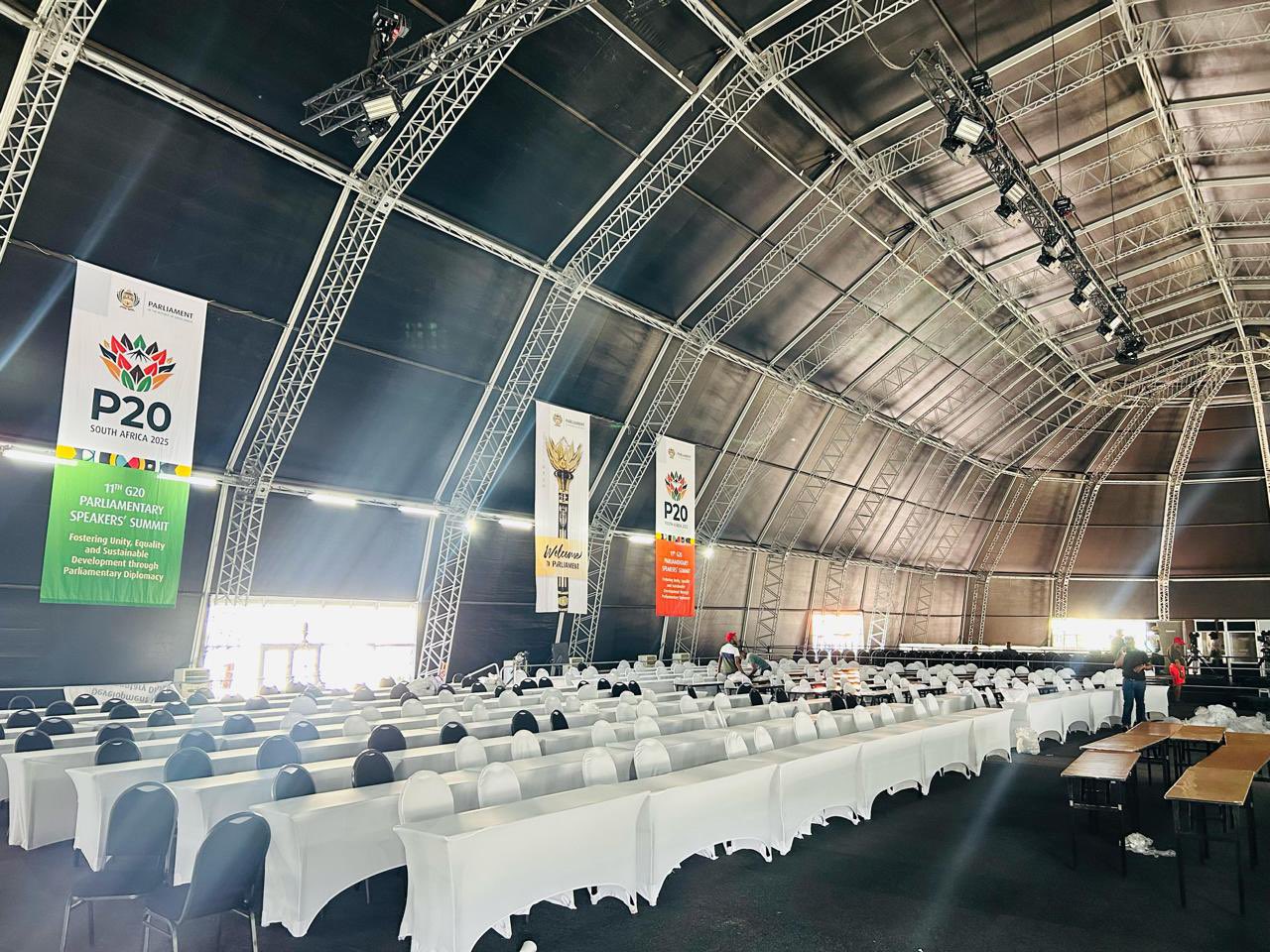News
Nieuwmeester Dome Delayed to 2026, But Promises Long-Term Savings for Parliament

A fire’s legacy reshaping Parliament
When a fire gutted South Africa’s Parliament in January 2022, the nation lost more than just a building. It lost a physical space tied to decades of democratic history and debate. Nearly three years later, lawmakers are still without a permanent chamber, relying on costly hired venues to conduct the country’s business.
Now, a new chapter is unfolding one that will see Parliament take temporary residence under the Nieuwmeester Dome, a purpose-built structure rising on the site of a Cape Town parking lot.
Delay pushes readiness to 2026
The Department of Public Works and Infrastructure told the Joint Standing Committee on Financial Management of Parliament this week that the dome, once expected this month, will only be ready for occupation in January 2026.
Minister Dean Macpherson and senior officials explained that the project is currently in phase III, tenant installation, which covers interior fittings and furnishing. The dome should be operational after Parliament’s December 2025 recess.
The delay, while frustrating, means sittings can finally take place in a secure, acoustically treated chamber while the National Assembly is rebuilt, a process projected to finish in 2027.
From parking lot to political stage
The dome borrows its name from the Nieuwmeester parking lot, opposite Parliament, where it’s being erected. At R31.7 million, officials say the structure is a once-off investment, far cheaper than the R48 million spent each year on renting venues like the Cape Town City Hall.
“This is not just a tent. It’s a fully equipped chamber designed for joint sittings of Parliament, complete with ablution facilities, mechanical and electrical installations,” said Thembeka Kolele, the department’s director of projects.
More than a temporary fix
Beyond its immediate function, the Nieuwmeester Dome is designed with reusability in mind. Once Parliament returns to its rebuilt chambers, the dome can be dismantled and transported for other state purposes, from ceremonial events to conferences or even state funerals.
It’s not without precedent, South Africans may recall a similar dome used at Nelson Mandela’s funeral in Qunu in December 2013.
Public reaction: Pragmatism or misplaced spending?
Reactions to the dome have been mixed. On social media, some South Africans welcomed the cost-saving logic, arguing that taxpayers deserve relief from the ballooning hire fees. Others questioned whether the R31 million investment is justified, especially when the country grapples with unemployment, energy crises, and strained public services.
Political analysts have noted that the dome carries symbolic weight: “It represents both the fragility of our democratic infrastructure and the adaptability of our institutions,” one Cape Town-based commentator remarked.
With construction on Parliament’s permanent chambers expected to continue into 2027, the Nieuwmeester Dome offers a pragmatic, if delayed solution. It may not carry the same gravitas as the historic National Assembly, but for now, it will give lawmakers a roof under which the business of democracy can continue.
And in a country where every rand counts, the fact that the dome doubles as a long-term state asset may prove to be its biggest legacy.
{Source: The Citizen}
Follow Joburg ETC on Facebook, Twitter , TikTok and Instagram
For more News in Johannesburg, visit joburgetc.com



























